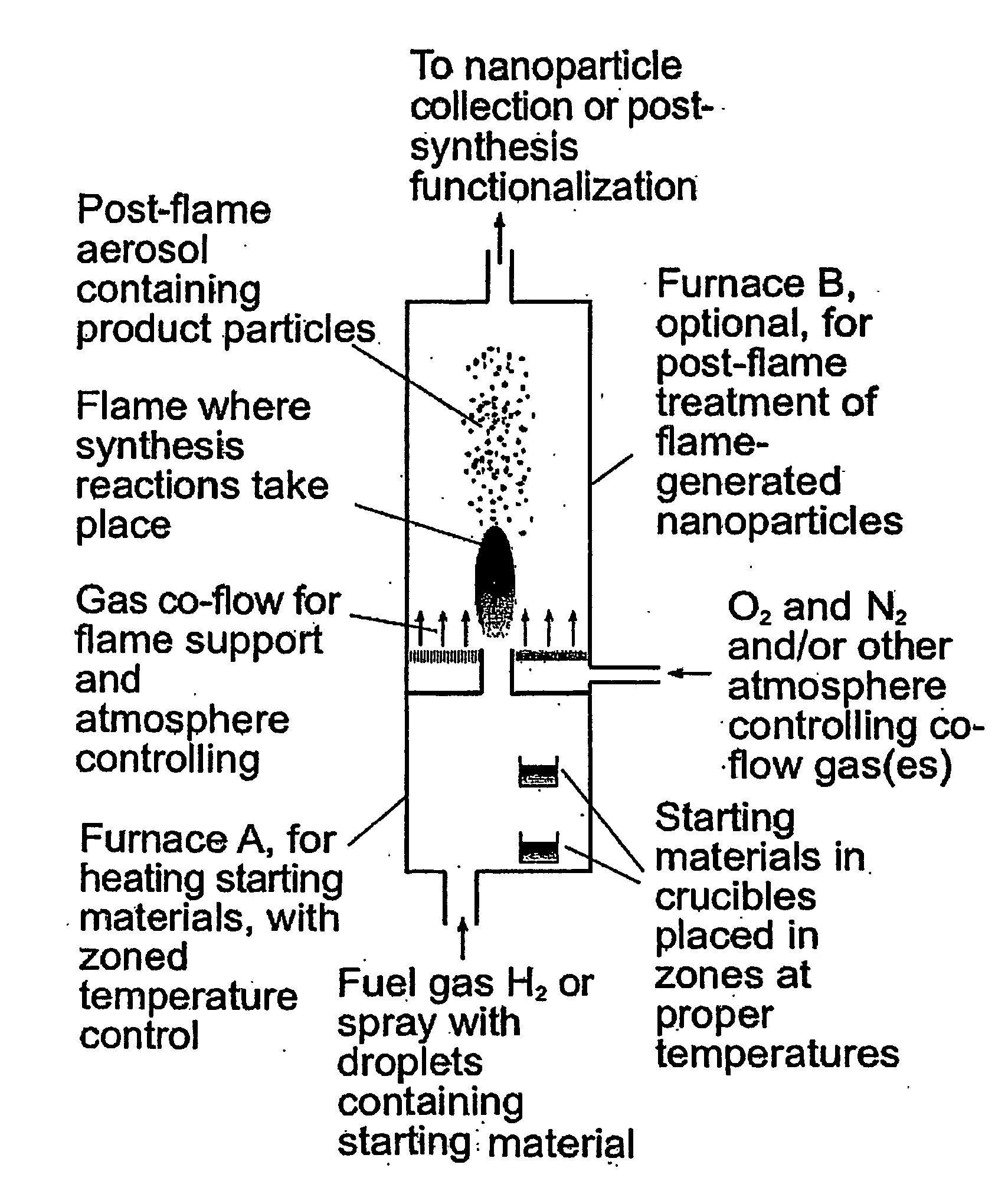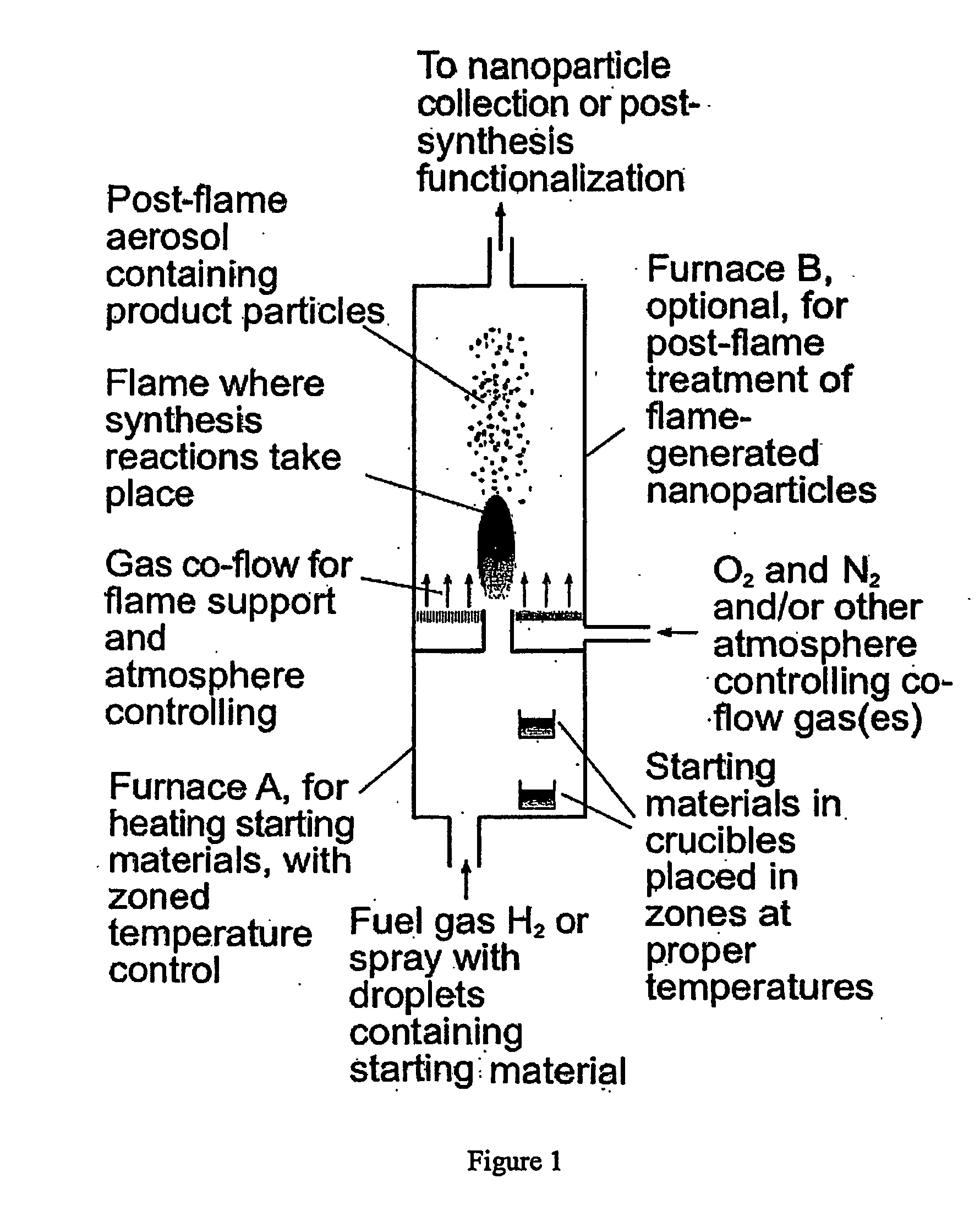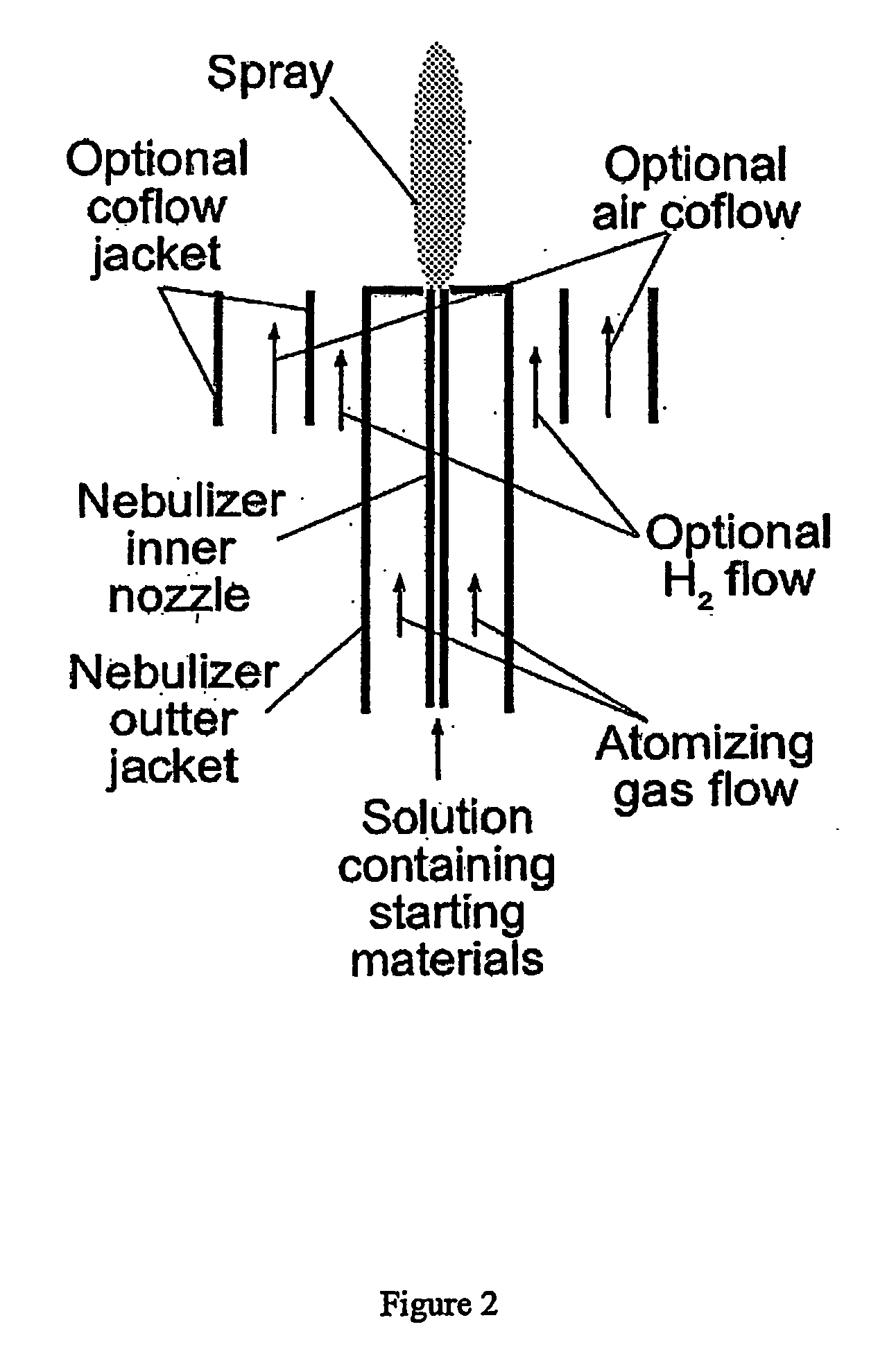Methods for Preparing and Functionalizing Nanoparticles
a nanoparticle and functionalization technology, applied in the field of chemistry and biology, can solve the problems of short lifetime, large spectral features, photobleaching, and potential cell toxicity, and achieve the effect of reducing or eliminating
- Summary
- Abstract
- Description
- Claims
- Application Information
AI Technical Summary
Benefits of technology
Problems solved by technology
Method used
Image
Examples
example 1
Gas-Phase Synthesis of Eu:Na:Si Nanoparticles
[0060] 50 mg Eu(TMHD)3 and 1 g metal sodium were placed in furnace A shown in FIG. 1, in zones at 200° C. and 400° C., respectively. Pure H2 was introduced into furnace A at 0.2 standard Liter / min through the inlet at bottom. Another stream of H2, after passing through a cartridge containing pure HMDS kept at 23° C. and entraining saturated vapor of HMDS, was also introduced into furnace A. The two streams of H2 mixed within furnace A and entrained the saturated vapors of the metal sodium and Eu(TMHD)3 at their corresponding temperatures. The H2 containing all the starting materials was ignited at the outlet of furnace A in 1 atmosphere air. The maximum temperature in the flame was about 2130° C. The starting materials decomposed in the flame, formed corresponding oxides, and further formed silica glass nanoparticles that contain europium. The particles were determined by transmission electron microscopy to be spherical and not aggregate...
example 2
Gas-Phase Synthesis of Eu:Zn:Si Nanoparticles
[0062] Methods were the same as those described in Example 1, except that Zn metal was substituted for the Na metal, and trace amounts of Eu were present (carried over from an earlier synthesis). FIG. 5 left panel is a transmission electron micrograph illustrating the size and morphology of the nanoparticles made in Example 2. The middle and right hand panels of FIG. 5 illustrate fluorescence emission spectra of the nanoparticles excited at 532 nm (middle panel) and at 466 nm (right hand panel), showing fluorescence lifetime on the order of 4 msec.
example 3
Gas-Phase Synthesis of Eu:Si Nanoparticles
[0063] The synthesis conditions were the same as those described in Example 1, except sodium metal was not used. Pure O2 co-flow was used surrounding the outlet of furnace A, by mounting an optional co-flow jacket, as shown in FIG. 2. The flame temperature was about 2400° C. A transmission electron micrograph showing the size and morphology of the resulting nanoparticles is shown in the left panel of FIG. 6. A fluorescence emission spectrum of the resulting nanoparticles is shown in the right panel of FIG. 6. The excitation wavelength was 466 nm, fluorescence lifetime was on the order of 1 msec.
PUM
| Property | Measurement | Unit |
|---|---|---|
| diameters | aaaaa | aaaaa |
| diameters | aaaaa | aaaaa |
| diameters | aaaaa | aaaaa |
Abstract
Description
Claims
Application Information
 Login to View More
Login to View More - R&D
- Intellectual Property
- Life Sciences
- Materials
- Tech Scout
- Unparalleled Data Quality
- Higher Quality Content
- 60% Fewer Hallucinations
Browse by: Latest US Patents, China's latest patents, Technical Efficacy Thesaurus, Application Domain, Technology Topic, Popular Technical Reports.
© 2025 PatSnap. All rights reserved.Legal|Privacy policy|Modern Slavery Act Transparency Statement|Sitemap|About US| Contact US: help@patsnap.com



